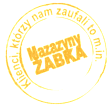Course for scissor lift operators
 Scissor lifts - key information
Scissor lifts - key information
It is a type of mobile platform which is classified as slow-moving equipment, i.e. equipment which is placed on a slow-moving chassis with the possibility of movement. In the case of scissor lifts, movement around a construction site or building under repair is possible thanks to the chassis being fitted with wheels, a lifting system, a working platform on which there is an upper position with a control panel. The lifts are most often used by the workers themselves (the platform usually accommodates 2 to 3 people at a time), sometimes they are also used for vertical transport of necessary goods or tools. The lifting height of the scissor system is usually about 8 - 14 metres. Lifts can be combustion engine driven (diesel) or electric (batteries) or BI-electric with combustion engine.
Where are scissor lifts used?
- In the construction industry: for the installation of electrical and sanitary installations, for outdoor work in hall construction and the installation of steel structures and hall roofs ,
- In the renovation industry - for painting the walls of houses and blocks of flats, for insulation work, for replacing roof tiles on detached houses
- In specialist glass and façade cleaning companies
- In the advertising industry - for hanging or replacing banners, billboards and other large-format advertising, such as painting murals.
High quality education is the key to successfully passing the UDT exam for scissor lift operators. The provisions of the Labour Code and general and specific occupational health and safety regulations require employers to provide specialist training in the operation and maintenance of technical equipment. This results, among other things, from the provisions concerning compliance with operating manuals, in which we can find manufacturer's provisions on the necessity of training and passing examinations in accordance with the law in force in a given country. Our centre offers the opportunity to gain practical and theoretical knowledge, both for people with no experience and for those who work with platforms but do not have the appropriate qualifications. In the case of the mast climbing course price includes access to the Centre's base facilities, safety equipment, harnesses, waistcoats, etc., as well as a learning platform with materials to help you prepare for the licensing exam.
Scissor lift course - details
- Available forms: open - for individual clients and closed - for companies
- On-site classes (Warsaw and other large cities) or online webinars
- Timing of classes adapted to the UDT exam dates - short waiting time for the exam
- Flexible course duration - depending on participants' knowledge and experience
 The learning process and the process of achieving the qualification - the examination
The learning process and the process of achieving the qualification - the examination
To ensure that the training programme and time are optimally adapted to the needs of the participants, the Centre's staff:
- During enrolment, they undergo an initial diagnosis and needs assessment
- At registration or at the start of training, they interview participants to establish their level of education, experience of working at height (e.g. as assistant operators with permits) or other qualifications
- If agreed with the customer, they will carry out pre-tests to check the level of the students' theoretical knowledge
- They assign candidate operators to groups according to their level of experience. Individual groups may have a greater or lesser number of practical hours scheduled as part of the course. The Centre's system allows an individual practice schedule to be set for each participant.
In the course of teaching, the lecturer supplements the knowledge necessary for the safe operation of the equipment. After completing the theoretical part, participants are subjected to a theoretical knowledge check in the form of an oral and/or test. Then, while waiting for the practical classes to be scheduled, participants are required to self-study on an online platform, read course materials, watch videos and solve mock tests (42 test sets, over 750 questions in the database). The employer can receive the test results in the form of a report, while only the participant can see details of correct answers, number and types of errors. Practical classes are held in the period between theory and the external examination, for which the Centre registers candidates at the stage of registration and commencement of teaching. The process of qualification verification consists of 2 stages: theoretical - written and practical - manoeuvres, interview in the scope of preparation and selection of equipment for work, assessment of technical condition and reacting in emergency situations, e.g. emergency lowering. This process is carried out by employees of technical supervision units, inspectors, specialists with appropriate qualifications.

































